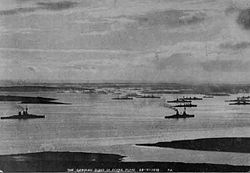Contents
| |||||
| Centuries: | |||||
|---|---|---|---|---|---|
| Decades: | |||||
| See also: | List of years in Scotland Timeline of Scottish history 1918 in: The UK • Wales • Elsewhere Scottish football: 1917–18 • 1918–19 | ||||
Events from the year 1918 in Scotland .
| |||||
| Centuries: | |||||
|---|---|---|---|---|---|
| Decades: | |||||
| See also: | List of years in Scotland Timeline of Scottish history 1918 in: The UK • Wales • Elsewhere Scottish football: 1917–18 • 1918–19 | ||||
Events from the year 1918 in Scotland .
